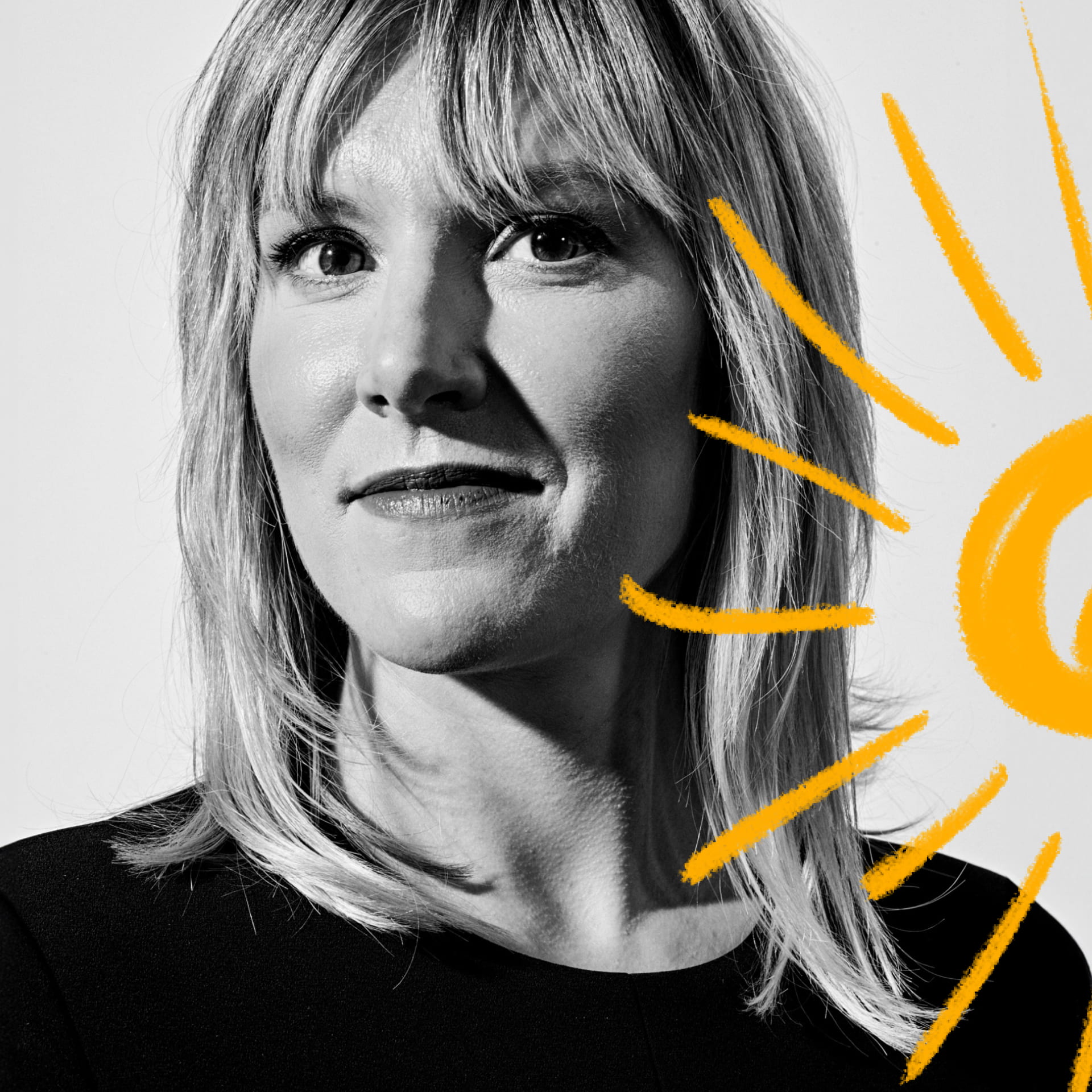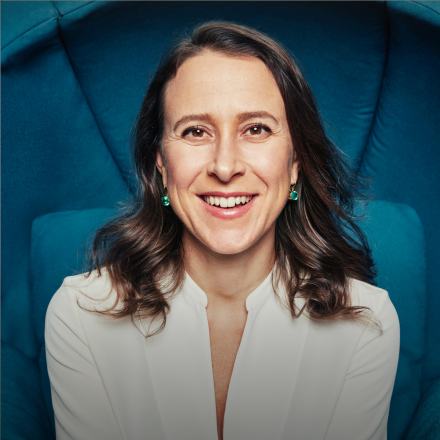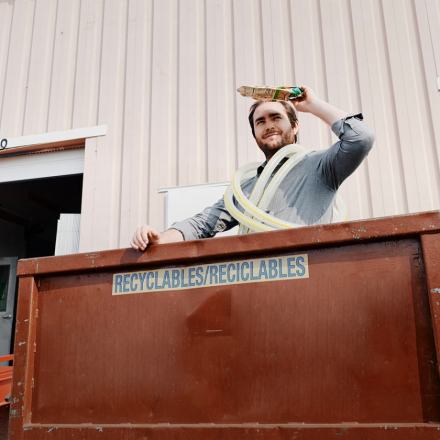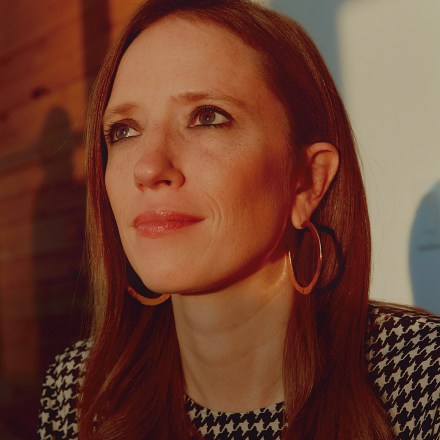In March 2023, solar entrepreneur Lynn Jurich took the stage for the Stanford Graduate School of Business’s Climate, Business & Innovation Summit. In the 15 years that had passed since she had attended the school herself, solar energy had come of age.
For the first time in history, the cost of solar energy has fallen below that of fossil fuels, and Sunrun, which Jurich co-founded in 2007, is now the largest installer of residential solar panels in the U.S., with more than 800,000 customers in 20 states plus D.C. and Puerto Rico. Her unwavering determination to change energy infrastructure (and the world) is what brought Jurich back to GSB that day. But these achievements, and the survival of her company, were never a given.
Jurich took her audience back to Sunrun’s early days, to a time when consumer solar was still the wheelhouse of “hippies and hobbyists,” and installation and hardware were expensive. Back then, Jurich and her co-founders had waded through the complexities of the green energy space without a clear sense for how to make their business model, much less the world, sustainable. And they were perilously close to burning through their venture capital.
“Our initial vision was that we would be pretty asset-light,” Jurich told the audience. “The existing solar installers out there would be doing the construction and selling to homeowners. We would raise the capital, and own and monitor the systems. So we’d only need a few employees. But we were wrong. Very, very wrong.”
The sun had already set, but the teenage Jurich refused to go back inside without sinking a few more shots. She wouldn’t feel content calling it a day until she was, according to her sister Tracy, “basically shooting NBA free-throw percentages.” Focus, which in this case earned Jurich a spot on the Pac-10 recruiting list for basketball by 8th grade, had been Jurich’s speciality since kindergarten.
At five years old, Jurich had started writing to-do lists. “My list would be like, ‘invent something.’ Or, ‘make a scientific discovery,’” she remembers. At age six, reading biographies became her pastime of choice, an activity that suited her introverted nature. She’d go to the public library in her neighborhood near Point Defiance, a lush peninsula jutting into the Puget Sound, and work her way through their nonfiction section. She had lots of things she wanted to accomplish, and was looking for proofs of concept. “I was always attracted to people who mastered their craft,” she says.
Her early favorites centered on strong women: Florence Nightingale, Betsy Ross, Anne Frank. But fittingly, no biography captivated her more than that of Thomas Edison, inventor of the lightbulb (and 1,000 or so other things). In a prescient 1931 exchange between Edison and Henry Ford, Edison notes, “We should be using nature’s inexhaustible sources of energy—sun, wind and tide.” (According to recent sources, the sun produces enough sunlight to power Earth’s electricity needs for a year every hour.)
But truly mastering one’s craft was no easy feat—Jurich had internalized this from her biography obsession. It required resolve and concentration, which Jurich maintained through high school and then college at Stanford, where she earned top honors.
After graduating, Jurich landed a competitive role at a prestigious private equity firm. Her job was to get in front of entrepreneurs by any means necessary—cold-calling, attending the same conferences as them, befriending their assistants so that she could sit next to them on a plane—and evaluate them for potential investment opportunities. This was daunting for the self-described “strong introvert,” but once she worked up the nerve she found that pushing herself had an important upside. Like her biography kick on steroids, she got to observe dozens of highly accomplished individuals modeling potential paths to success, an experience that made it clear to her that “if there’s a good company out there, it’s going to get funded.”
After three years working on the investor side, she needed no further proof of concept. “It was just very clear to me that I wanted to be on the entrepreneur side,” says Jurich. This hard-earned clarity led her to return to Stanford for business school.
“How do we get people to give solar a shot?” It was January 2007, and this was the question Jurich, Ed Fenster, a Stanford GSB classmate, and Nat Kreamer, a childhood friend of Fenster’s, had been debating for weeks over pizza and Diet Coke in the living room of Fenster’s San Francisco apartment.
They’d filed the paperwork for their company Sunrun just a few days earlier, officially making this question of particular interest for the group. Jurich was fresh off a summer banking internship in Shanghai, where she had been struck by the density of construction and urban energy infrastructure. She couldn’t stop thinking about clean energy and how to make continued infrastructure development more sustainable. Kreamer was recently back from a tour in Afghanistan and motivated to seek energy independence after fighting in a war he’d concluded was mostly about fossil fuels. Fenster had connected the dots, uniting the team in his apartment to solve the challenge of solar expansion.
Fueled by cheesy carbohydrates and artificial sweetener, they concluded that the real opportunity lay not in developing cleantech, but in deploying it. “We saw that VC money was already being put toward making solar panels cheaper. We were quite certain that innovation was going to happen,” says Jurich. “So we thought, ‘Why don’t we solve the problem of convincing people to give solar panels a shot, and figuring out how to interface with the electric grid?’ That was gonna be the bigger challenge and the bigger area to add value.”
The answer they settled on was to lower the barrier to solar adoption as much as possible for homeowners. Sunrun would offer ‘solar-as-a-service,’ leasing solar panels with a small upfront cost at a time when owning and installing one’s own solar panels was still logistically challenging, and prohibitively expensive for many. “The business model innovation was that we would put solar panels on your rooftop for very little money, and you would sign a 20-year contract to buy the electricity from us for X cents per kilowatt hour,” says Jurich. “So it was a long-term contract for us, the customer didn’t have to spend the money up front, and they could get cheaper power. Win-win all the way around.”
Going the consumer route, as opposed to leasing solar panels to corporations, was an added challenge, however. It meant figuring out how to install and operate panels on houses of all shapes and sizes in varying conditions around the country. But if they could manage all of that, Jurich believed this approach would ultimately make a more defensible business. “We believed costs would hit grid parity first at the consumer level because consumers pay the most money for power,” says Jurich.
By narrowing their focus to homeowners, the founders were actually thinking bigger—not only would they be spreading clean energy, they could reduce inefficiencies in energy infrastructure. “What’s really innovative about solar is you can use an existing roof,” says Jurich. “You don’t have to acquire land. You don’t have to build big transmission lines. You don’t have to interrupt the ecosystem.” The value prop and climate impact seemed undeniable. They’d soon find out it wasn’t such an easy sell.

Jurich’s voice was hoarse from hollering at passersby. This was her third county fair in as many days, dusty and hot, and a far cry from her time in private equity traveling on private jets (which, at least on an environmental level, felt like karmic justice). Again, Jurich had found herself in the challenging situation of having to talk to strangers. This time, Jurich was donning her company swag (an oversized white tee that read, “A penny for your watts?”) and standing next to an oversized pumpkin. She was desperate to make a sale.
Fenster, they decided early on, would take the role of CEO and focus on raising capital; Kreamer, as president, would take on installations, billing, and system monitoring; and it was up to Jurich as COO to build out their business pipeline (read: sales). She had deduced that the quickest way to sell consumers on solar panels was to go straight to the source. “This was 2007. There weren’t a lot of people online searching, you know, ‘I want a solar energy system,’” says Jurich. “So we were like, ‘Where do you find a homeowner who would be interested in Sunrun?’ I decided to go to places with lots of homes and lots of sun.”
From the rare fair-goer who agreed to chat, Jurich gleaned that “going green” still wasn’t enough—they were willing to consider solar only if it saved them money. Even after Sunrun’s upfront costs (initially about $10,000 for installs, still well below the cost of buying and installing one’s own panels), Sunrun would save them money, but only over the course of years—a commitment most consumers weren’t willing to make with a startup that had existed for just a few months. “What I always told them was, ‘If someone came to your house and said they would install a gasoline tank, and you could buy gas for $1 per gallon for the next 20 years, would you do it? That’s what we’re offering: Electricity at a fixed price for 20 years and it’s cheaper,’” says Jurich. “People thought it was too good to be true.”
After dozens of refusals, Jurich finally caught the attention of a woman named Sue who ran a trucking company. Jurich made her pitch, highlighting the fixed, long-term rate, which was much lower than traditional electrical costs. She told Sue that Sunrun would own, operate and maintain the solar panels on her roof, but that they outsourced sales and installation to existing solar installers.
Sue, excited to bet on a young female entrepreneur, was convinced. And Jurich, after months in the summer heat hawking her solar wares, made her third sale (Sunrun’s first sale was to Fenster, and the second was to his therapist). “Seeing that there was actually consumer interest in this helped me so much,” says Jurich, “It gave me the conviction that this was gonna work, that all the hustle was worth it. That conviction can get you through some pretty hard times.”
Hard times turned out to be just around the corner, and she’d need all the conviction she could muster.
“We’re done for,” Jurich thought as she read the headlines announcing the bankruptcy of Lehman Brothers Bank. It was September 2008, and Sunrun was desperately in need of funding—money that suddenly seemed entirely unattainable.
Sunrun’s early sales had put its business model to the test. Since the company was covering most of the upfront purchase and installation costs, its ability to sell was contingent upon its ability to raise money. But banks wanted proof of sales before lending. “We had a chicken and an egg problem,” says Jurich. The co-founders were forced to use their seed money—a few million they’d managed to raise from contacts in private equity and banking—to finance their earliest installs. But with dwindling funds and no guarantee that they could secure investments to stay afloat, “it made for an extremely stressful time,” Jurich says.
They had finally managed to raise $12 million in June 2008, a lifeline as sales were starting to take off—but nothing close to what they needed to scale. Just as new term sheets began to come their way, Lehman Brothers went under, signaling a complete collapse of the financing ecosystem.
Every day, another bank pulled out of negotiations. Sunrun’s point of contact would be fired, or the entire financial institution would dissolve. But then, in November 2008, there came a flicker of hope. The Sunrun founders received a callback from U.S. Bank, the rare financial institution that hadn’t been decimated by the collapse.
Knowing this was likely their only shot, the founders negotiated a deal they hoped would be hard to refuse. “We were panicking,” Jurich says. “But at the same time, we were like ‘We are going to close this deal because we have no choice.’”
In late 2008, Sunrun closed a $40 million debt financing round from U.S. Bank. “Looking back, we call this moment our big awakening,” Jurich says. Fenster agrees. “Had we not gotten that deal,” he says, “the company might not have made it another four months.”
Six years after bringing Sunrun back from the brink, Jurich’s sense of solar inevitability was feeling like less of a moonshot with every passing day. For one, Sequoia became a believer (and led Sunrun’s Series C), as did traditional energy giant, PG&E, who had invested an additional $100 million to finance installations.
Which isn’t to say things were entirely sunny. Solar gaining traction threatened most other incumbent utilities, who did all they could to block Sunrun’s growth through lobbying. And then there were the government subsidies—hugely positive in the ways they pushed growth in a sustainable direction, but wildly destabilizing from a business perspective, with one subsidy or regulation unlocking a market one month, and an expiring subsidy making another disappear the next.
In 2009, the Obama stimulus package extended a solar tax credit to homeowners who bought their own system. This lowered the purchase price of solar panels overall, which made it harder for Sunrun to convince homeowners to buy into their leasing model, in particular paying for the company’s upfront installation costs. “That blew up our whole transaction model,” says Fenster. Jurich and Fenster, by then co-CEOs (Kreamer left the company in 2009), decided they needed to eliminate upfront costs entirely in order to remain competitive. To compensate, they increased their new customers’ monthly payments while still managing to stay below traditional utility rates.
Their new no-upfront pricing structure made it easier than ever for homeowners to give solar a shot, but not enough to edge out their competition. Elon Musk’s SolarCity had just gone public and was starting to outpace Sunrun. And SolarCity had something crucial that Sunrun lacked: their own operations and installation capabilities. Seven years in, Sunrun was still essentially operating as a management and financing company, relying on third parties for construction, installation and maintenance.
If they wanted to scale, Sunrun would have to take over the third-party labor themselves. This, of course, required a huge amount of capital that Sunrun didn’t have. But, no stranger to complex negotiations, Jurich and Fenster managed to secure a massive acquisition of their largest installations partner, REC Solar’s Residential Division (AEE Solar and SnapNrack), in an all-equity deal as a workaround. Overnight, Sunrun grew from 150 employees to 550. That same year, signaling just how much Jurich had grown as a leader since her days of reluctant cold-calling, Fenster stepped down as co-CEO of Sunrun, and Jurich stepped into the role. “Lynn was a better head for the company than I was,” he says. “There are really smart people who are excellent at making decisions but who aren’t great at managing people. Lynn’s unique in that she can do both.”
Poised for expansion, and in the wake of SolarCity’s IPO, the pressure was on for Sunrun to follow suit. “I knew we needed to go public,” Jurich says. “There were a handful of solar IPOs that had just happened that we didn’t believe in, and we thought they were gonna spook the market. So I didn’t really feel that I had the luxury to slow down at any point in the process.”
Not even when she learned she was pregnant.
Jurich’s daughter Blythe was born just a few weeks before Sunrun’s IPO on August 5, 2015, and was in Jurich’s arms when she rang the Nasdaq bell. “I got on a conference call the day I got home from the hospital, and my mom moved in and helped me,” says Jurich. (While Jurich, who had her second child in 2018, didn’t take maternity leave, she expanded maternity leave benefits for the rest of the company, signaling that she didn’t expect others to make the same choice that she had.)
Sunrun’s share price dropped roughly 20% on its first day of trading, which only fed Jurich’s resolve to be as present at the company as possible. She started her investor roadshow when Blythe was just five weeks old, bringing her mother and a nurse along for support. “I was constantly pumping and shuttling milk back and forth between hotels and hedge fund offices,” Jurich says. “It was exhausting.”
By 2017, Sunrun had rebounded from its post-IPO dip to become the largest publicly traded rooftop solar company in the U.S. following Tesla’s 2016 acquisition of SolarCity. After years of fundraising, surviving a recession, battling incumbent utilities, navigating company altering climate legislation, IPOing and becoming a mother, Jurich felt like things were finally in a good place.
That’s when the Wall Street Journal article came out.
Get the best stories from the Sequoia community.
In the May 2017 piece, former Sunrun employees claimed the company hadn’t reported order cancellations that may have affected sales data in financial disclosures leading up to the IPO. Jurich denied all wrongdoing, claiming the journalism was “not representative of the company and suspect.” Despite Sunrun’s assurances, the article triggered a probe by the U.S. Securities and Exchange Commision (SEC) of Sunrun and its competitor, SolarCity. Sunrun’s stock bottomed out. And shareholders filed a class action suit against Sunrun.
Jurich remembers this time, as her company’s reputation and her own integrity were called into question, as one dominated by a profound sense of grief and powerlessness. Ever since her days of writing her first to-do lists, she’d been laser focused on success. But suddenly, no amount of resolve, no degree of hustle could change the way the world perceived her and her company.
Finally, months after the initial article broke, Sunrun released a statement saying that after conducting an internal audit, the SEC didn’t find any evidence of manipulated sales data. Still, the company ended up making a $30 million settlement with shareholders.
Although Sunrun’s name had technically been cleared, in the weeks following, Jurich continued to struggle emotionally from the toll the probe had taken. For the woman who had defined so much of her life by her achievements, this failure—which she certainly saw it as—felt existential. She faced a choice: “Your options are either to crumble because you can’t deal with it, or to figure out how to keep going and operate at a higher level,” says Jurich.
For the first time, she decided that “higher level” didn’t mean working harder. It meant “reflecting on my values, starting a meditation practice, keeping my fitness going, and not caring too much about what other people think,” says Jurich. She was able to let go, minding public perceptions less as her company slowly but surely regained its footing and earned back consumer trust.
And then, from their all-time low in share prices, something surprising happened. “The WSJ article was an interesting inflection point for the company,” says Fenster, “because after it caused the stock to bottom, momentum started to come back.” Over the next two years, Sunrun’s stock rose roughly 400%, signaling to the world that Sunrun had staying power.
Just before Thomas Edison’s death, in that same 1931 conversation with Henry Ford, he said, “I’d put my money on the sun and solar energy. What a source of power! I hope we don’t have to wait until oil and coal run out before we tackle that.” Today, Jurich feels closer than ever to paying out her hero’s bet.
Since 2007, Sunrun has deployed 5.7 gigawatts of total solar capacity, making it one of the world’s largest sources of networked solar energy. In 2019, Sunrun overtook Tesla’s SolarCity as the leading installer of residential rooftop solar panels in the U.S. “We’re at this inflection point where consumers have wrapped their minds around solar power, and they accept it,” says Jurich, who stepped down as CEO of Sunrun in 2021, but remains the company’s Co-Executive Chair.
Part of that acceptance comes from a greater understanding of climate urgency. It comes from legislation like the Inflation Reduction Act of 2022, which, among other clean energy initiatives, reinstates generous tax credits for homeowners who install solar panels. And it comes from increasingly affordable solar hardware, a trend the founders predicted at Sunrun’s outset (today, solar panel prices are down nine times since 2006). An additional factor is technological advancement: “One of the challenges with solar was always that you couldn’t store it,” says Jurich, “but now, batteries have completely changed that. You can generate, store and distribute energy to the grid without building new plants, or even solar farms. You can just use existing roofs!” To that end, in 2020 Sunrun funded and helped found Lunar Energy, an independent company focused on building the next-generation home battery system.
A decade and a half working in clean energy has made Jurich a realist about the magnitude of her company’s undertakings. Which is why, more than ever, she’s looking to others to share the burden, and in part why she returned to her alma mater in March 2023. This was a chance to speak to a new generation of potential clean energy leaders.
“I do worry that the United States broadly has lost the skillset to develop large-scale infrastructure,” Jurich said toward the end of her keynote. “But I encourage all of you to help. I’ve already talked to a couple of you who have great business ideas around trying to make labor more efficient, making large-scale construction more efficient. And I do think we will get there.”
By “there,” Jurich means a sustainable future of clean energy abundance. And on a personal level, she hopes for a future with more balance, filled with more of the hard-earned equanimity on display at the GSB climate summit. “One of the things I’ve come to appreciate in life is that in order to be most effective, you need periods of both intensity and periods of rest and renewal,” says Jurich.
Rest, as always with Jurich, is a relative concept. She’s Co-Executive Chair of Sunrun, Chair of Lunar Energy, and she’s launching a women’s health institute and writing a novel—imagining different worlds while working to improve our own. But at the very least, “I’m no longer trying to do it all at once,” she says. That simply wouldn’t be sustainable.




